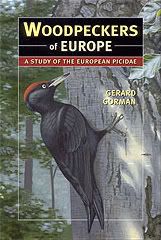Friday, 4 January 2008
Forest cover and quality
Since the 1920s the total amount of forest cover in Europe has steadily increased. Today around 30% of the European land-mass is covered by forest . This may at first seem a positive development for woodpeckers (and other woodland wildlife) but things are not as rosy as they might seem. Europe’s forest cover is largely artificial, that is it consists mainly of intensively managed plantations, plantations which are often mono-cultures of non-native tree species. Only a few scattered islands of "natural" old-growth forest remain, mostly in high mountains and in the east. In Europe only two woodpecker species (Great Spotted and Black) are regularly found in forests with low levels of tree species diversity. All other woodpeckers require essentially unmanaged forests with a rich tree diversity and a significant proportion of older deciduous trees. Today the most dangerous threat to woodpeckers, and indeed to all forest flora and fauna, is intensification in the forestry industry. In many parts of Europe "natural", old-growth forests have been, and still are being, converted into mono-cultures. A rich heritage is being clear-felled and replanted with trees of the same age, which are then felled at the same age. And if that were not cause for concern enough, some areas are planted with non-native tree species. Threats to Europe’s forest include inappropriate forestry management, that is, intensification and afforestation with alien species, pesticide use, logging of old-growth forest, fragmentation, road building, urbanisation, conversion to farmland, inappropriate water management (drainage, dam construction ) and general pollution. The successful conservation of Europe’s woodpeckers depends upon various factors being tackled together. They include the maintenance of wooded areas in which dead and dying trees are retained, the retention of stumps and snags on live trees, management of damp forests that includes retaining rotten timber and selective rather than blanket clear-cutting of trees.
Subscribe to:
Post Comments (Atom)





No comments:
Post a Comment